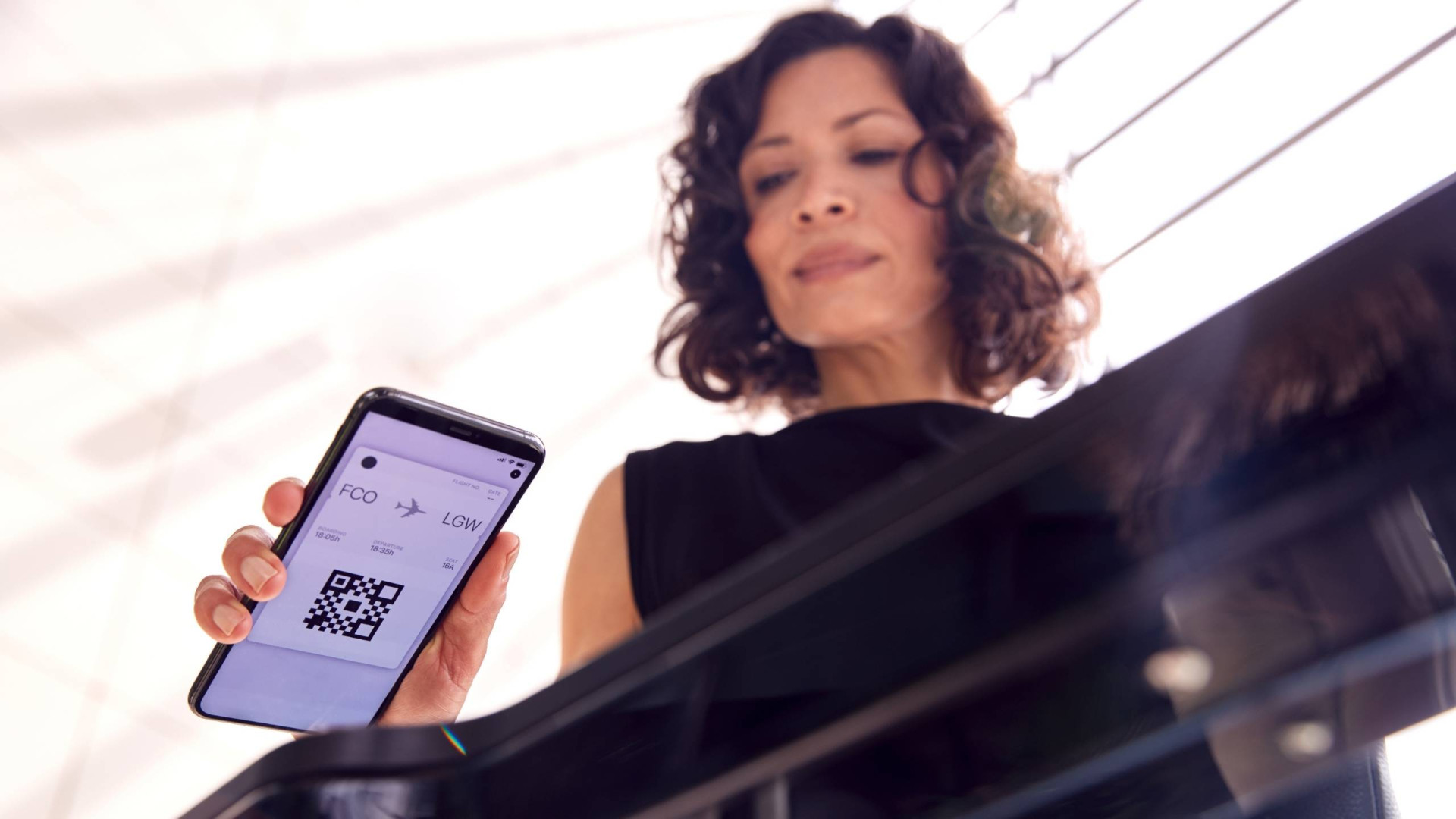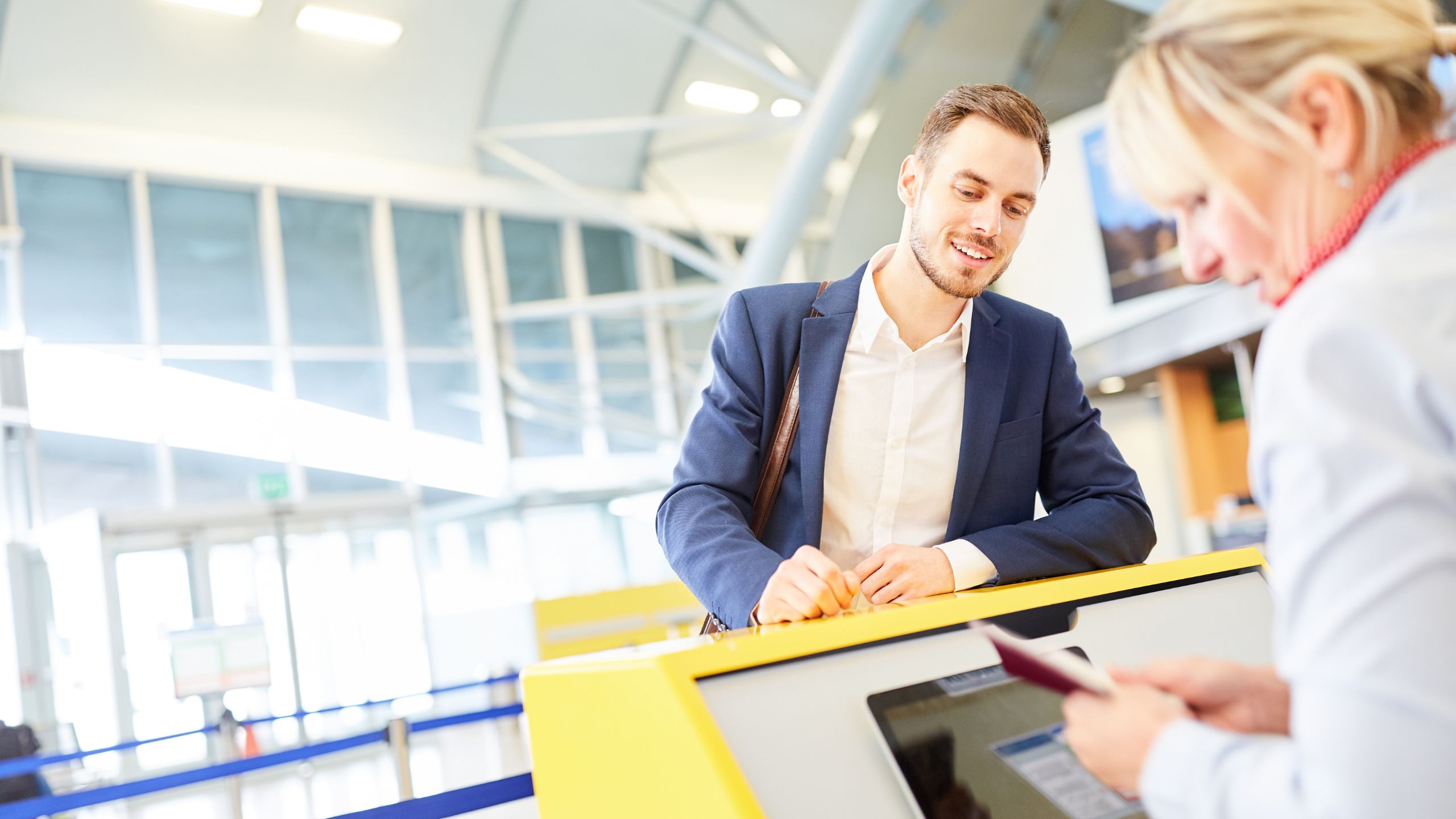Updated on 14.03.2024
Now that the U.S. State Department has successfully completed the pilot program for digital visa approval, there are no more obstacles to the introduction of paperless US visas. We will inform you about the current status.
Share article:

As part of the modernization and digitalization of the consular application process, the U.S. State Department is aiming to abolish the immigrant and nonimmigrant visas affixed to passports. In future, visas for the USA would be approved and issued digitally (Digital Visa Authorization, DVA) instead of the conventional visa sticker or visa stamp in the passport.
The Bureau of Consular Affairs had conducted a pilot program for digital visa approval with a very small number of K-1 visas for fiancées of US citizens at the US embassy in Dublin in September 2023.
Dublin provided an excellent environment for such a test because, among other things, U.S. Customs and Border Protection (CBP) Preclearance facilities are available at the airport and airlines flying directly to the United States from Dublin already participate in CBP's Document Validation Program.
Following the successful test phase in Ireland, Julie Stufft, Deputy Assistant Secretary of State, confirmed in November 2023 the plan to introduce the issuing of paperless visas for the USA worldwide and to extend this to other visa categories.
The planned introduction of paperless US visas raises a number of questions, e.g. what impact this will have on the US visa application process and processing times. The following key points have been announced by the US authorities:
It is not yet clear whether digital visas for the USA will be available for some or all visa categories. However, the visa application process for first-time US visa applicants will remain the same and no fundamental simplifications for first-time applicants are currently expected. A reduction in the visa application fee is also not expected.
The visa procedures via the US consulates / US embassies with the application forms to be completed will therefore basically remain in place. This means that personal visa interviews at US missions worldwide for those who are not eligible for the Interview Waiver Program will in all likelihood continue.
The background to this is that the U.S. Department of State intends to introduce an electronically issued paperless US visa and not a visa that is applied for, processed and issued entirely online. The decision on whether or not to issue the US visa will continue to be made by the US consular officers during the personal visa interview and / or by reviewing the application documentation. The paperless US visa is what it says on the tin: a paperless digital proof of visa status.
The difference will be that the US diplomatic missions abroad will no longer issue visas in passports, but will store the visa exclusively digitally in a protected government database.
The US visa itself will presumably look similar to the previous one and, as mentioned, will be available in digital form via an app or similar.
It is not yet known which (new) requirements applicants will have to fulfill for digital US visas in the future.
According to current information, notification of whether a traveler has valid travel documents and whether a digital US visa is available will be sent directly to the airlines or airports. The Document Validation Program of U.S. Customs and Border Protection will then be used to determine whether the person has a valid US visa and is entitled to enter the country.
In addition, visa holders will need an app on their cell phone or similar instead of a passport to show or prove their visa status in electronic form.

The United States is planning to phase out conventional US visas over a period of 18 months or longer. Paperless US visas are not expected to be in widespread use until spring 2025 at the earliest.
As the program is still at an early stage, it remains to be seen when which visas will be issued digitally in which countries and what changes will actually result for visa applicants.
Source:
Date:
Wir und unsere Partner nutzen Cookies, um personenbezogene Daten wie z.B. Browsing-Daten zu speichern und abzurufen, um z.B. Inhalte und Werbung bereitzustellen und zu personalisieren sowie die Verwendung der Website zu analysieren und das Benutzererlebnis zu verbessern. Sie erfahren mehr über die Zwecke, für welche wir und unsere Partner Cookies einsetzen, wenn Sie unten auf den Button „Cookie Einstellungen“ klicken. Hier können sämtliche Einstellungen auch geändert werden. Nachträglich kann man jederzeit seine Cookie-Auswahl überdenken oder seine Einwilligung widerrufen, indem man auf den Link zu den Cookie-Einstellungen im Footer unserer Webseite klickt. Beachten Sie bitte, dass das Blockieren einiger Cookie-Typen unsere Möglichkeiten zur Bereitstellung von auf Ihre Interessen zugeschnittenen Inhalten haben kann oder einige Funktionen der Webseite nur eingeschränkt zur Verfügung stehen.
Durch klicken auf “Alle Cookies akzeptieren” stimmen Sie unserer Nutzung und der Weitergabe Ihrer Daten an unsere Partner zu.